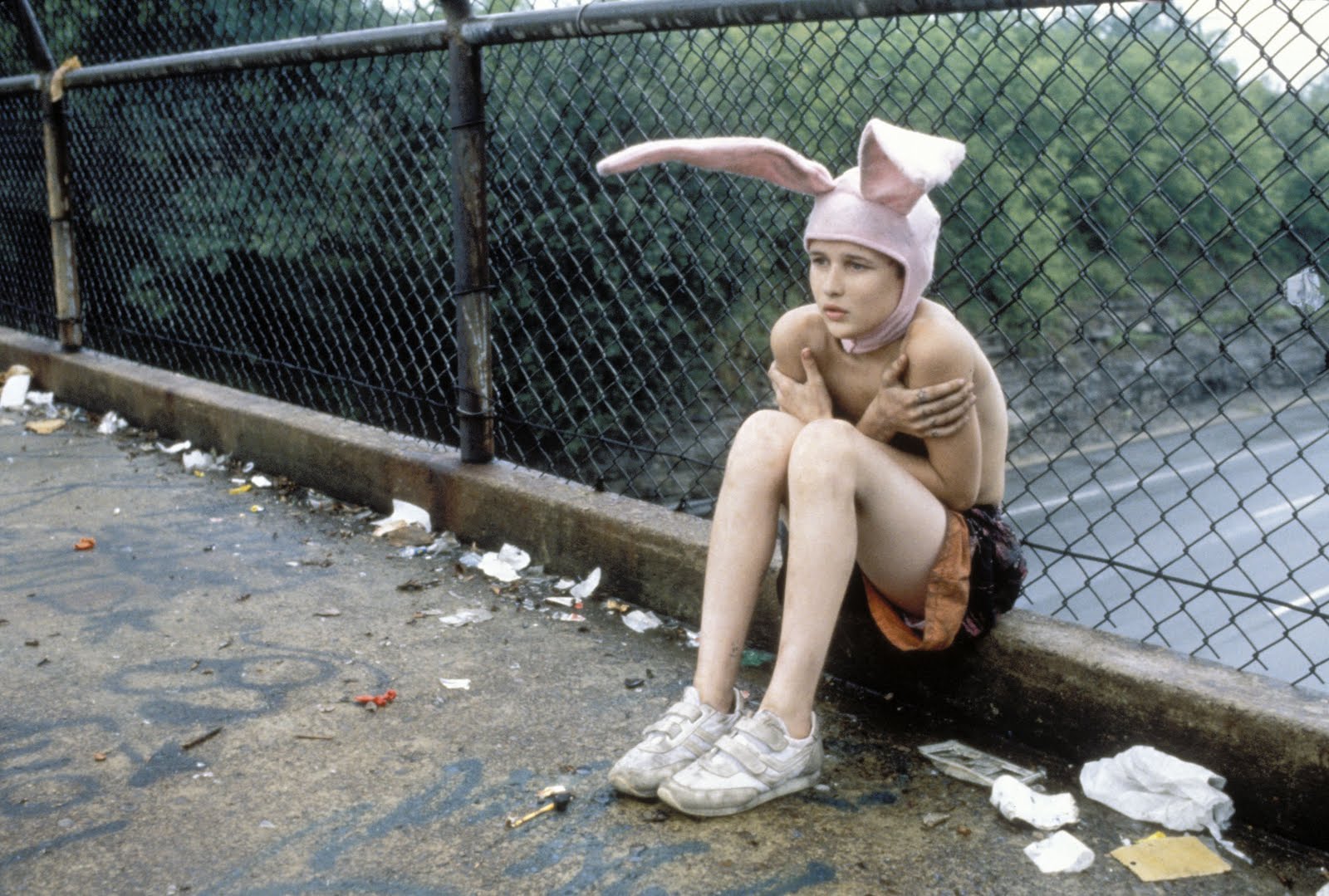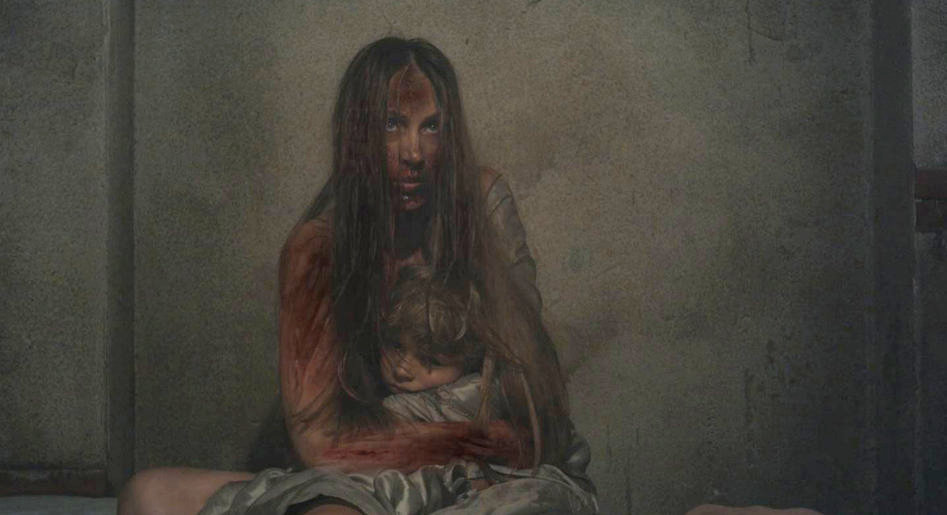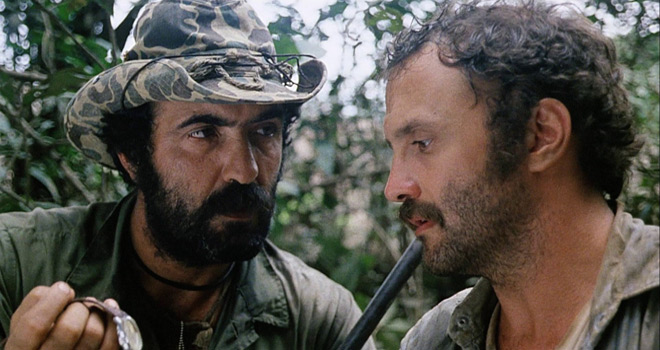5. Dogtooth (2009)

A Greek film directed by Yorgos Lanthimos, “Dogtooth” is about a family of five, (Christos Stergioglou, Michele Valley, Angeliki Papoulia, Mary Tsoni, and Christos Passalis). The mother and father have kept their two daughters and one son in exile in their gated house for their entire lives, meaning they have no concept of the outside world.
The film takes place while all of the children are adults, but due to their situation, they still act like children because they are treated like such. For good behavior, they are rewarded with stickers and for bad behavior, they are beaten. The one way the children are told that they would be allowed to leave is if they lose their dogtooth, one of their front teeth, which as adults they will never naturally lose.
What really adds to the disturbing factor for this film is the realistic acting, violence, and sexual situations. The actors who portray the children do so in a way that enables the viewer to believe the situation that they are in through their actions.
The film’s political commentary exhibits the ideas of the film in a basic form that speaks volumes on a large and small scale. “Dogtooth”, in essence, is a journey in realism that does not rely on blood and guts to disturb, but on the idea of control.
4. Oldboy (2003)

Based off of a manga, “Oldboy” is a South Korean film directed by Park Chan-wook. After a night of drunkenness, a businessman named Oh Dae-su (Choi Min-sik) finds himself confined in a hotel room that he cannot escape. By watching the television in his room, he finds out that his wife has been murdered and that he is the main suspect.
Fifteen years later, Oh Dae-su is released by waking up in a box on a roof, for reasons unknown to him. Once he is out, he is randomly given a cell phone and cash from a homeless man. After a delightful scene with an octopus, Dae-su receives a call from his captor, Woo-jin, who gives him the ultimatum that he must find out why he imprisoned him. If he does this within five days, Woo-jin will kill himself; if he does not, Woo-jin will kill Dae-su.
The violence of this film is cinematic, beautiful, and also very brutal. The plot twist is original and truly disturbing, unlike the American remake. A true tale of revenge and the unlimited amount of effort some go through to obtain it, “Oldboy” is a visual gem of gory beauty and a story that you will not soon forget.
3. Gummo (1997)

The first film written and directed by Harmony Korine, “Gummo” does not have an exactly clear or steady plot, but revolves more around the people of a town that had destroyed by a tornado years earlier. The film goes from character to character throughout the town, showing their daily lives and their interactions with others.
The visual elements of this film display the town in a washed out and grimy reality. This film can be seen as disturbing for the same reasons as to why it’s good; it is an unsettling look into American small town life, as dirty, dingy and battered by the bored people living there, sitting around talking in circles.
2. A Serbian Film (2010)

“A Serbian Film” is just that – a Serbian film from director Srdjan Spasojevic. The story is centered around Milos (Srdjan Todorovic), a retired porn star who decides to take on one more job because after that, he would be set for life. After his first day on set is a little too weird and violent, Milos tries to talk to the director, Vukmir (Sergej Trifunovic), about backing out of the project, but after Vukmir shows him his ultimate art, newborn porn, Milos realizes that he may already be in too deep.
The film’s set design mimics its dark and clouded themes and provides a fitting atmosphere. “A Serbian Film” is certainly not for the faint of heart, but even with its copious amounts of gore and taboo sexual situations, the narrative of the film is cohesive, the acting congenial, and the soundtrack is excellent.
1. Cannibal Holocaust (1980)

Filmed primarily in the Amazon rainforest in Colombia, this Italian film was directed by Ruggero Deodato. The film starts out with Professor Harold Monroe (Robert Kerman) going into the rainforest to find four documentary filmmakers (Francesca Ciardi, Perry Pirkanen, Gabriel Yorke, and Luca Giorgio Barbareschi) that had entered the forest previously to make a documentary about the local cannibal tribe, but had not yet returned.
After encountering the hostile tribe, the professor finds out that the four had been there and had stirred up the tribe quite a bit. After befriending the tribe, they finally show the professor the group’s remains and their footage. Back in New York, the footage is reviewed and it is learned what the group did in order to stage their documentary.
This film pops up on most ‘disturbing movies’ lists, and it is no secret as to why. With real animal killings and abuse, many rape scenes, and realistic gore and deaths, it makes an impression. The film is an exercise in hyper-realism, so much so that Deodato was summoned in court to prove that the actors were not dead. Besides being a commendable addition to the horror genre, “Cannibal Holocaust” is a welcome addition to film in general, begging to ask the question, who are the true cannibals?
Author Bio: Erin Kubat is a Theatre manager in a small mountain town in Arizona by night, but by day is a writer, photographer and lover of film.